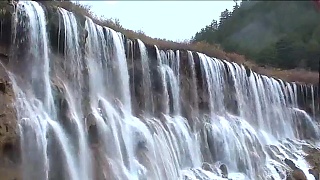The GuanYin of Mount XiQiao is a colossal statue in NanHai District of FoShan, GuangDong. This monument stands 62 m (203 ft) tall, and sits on a 15 m pedestal, making a total height of 77 m (253 ft). GuanYin is the bodhisattva of compassion in Buddhism.
With The Hutchinsons ...
[640],shadow=true,start=,stop=The pepper stuffed with minced meat is a signature dish of the Hakka cuisine called 'niang', a descriptive word of the method of preparing the food. It's also common among other minority ethnic groups in southern China. The wide varieties of vegetables used for niang range from different kind of tofu to eggplants, bitter gourd, okra to even the spongy shell/skin of pomelo.

 The GuanYin of Mount XiQiao, FoShan, GuangDong
The GuanYin of Mount XiQiao, FoShan, GuangDong
















